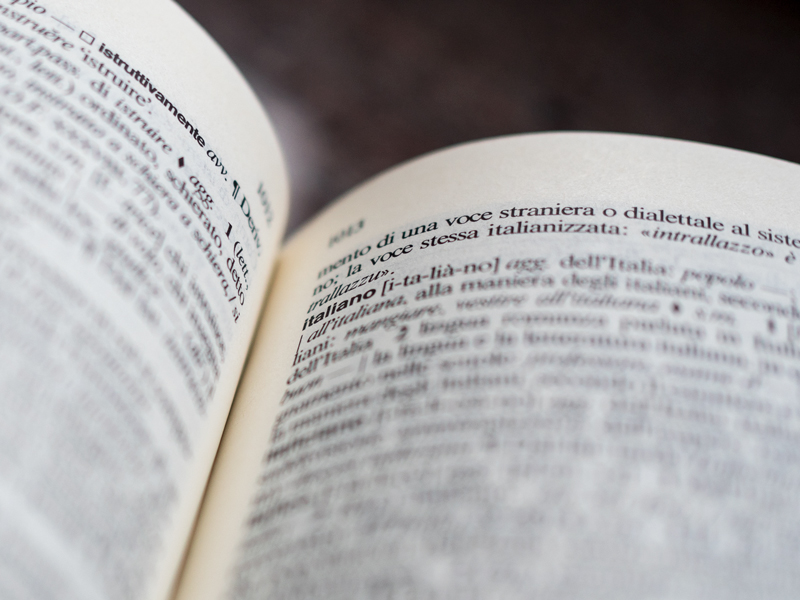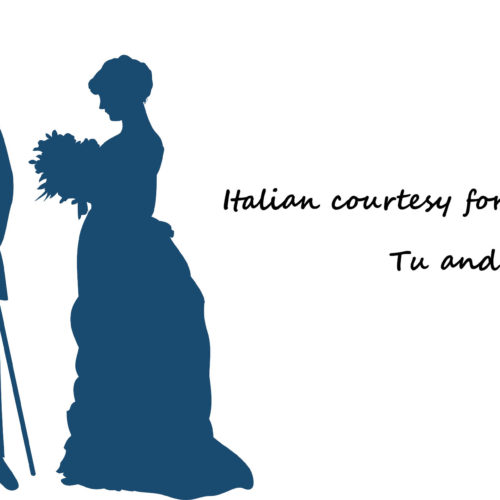ADJECTIVES (aggettivi)
THE COMPARATIVE DEGREE
With the comparative degree we intend to describe a noun, a pronoun, or a verb by comparing it to another one.
The comparative degree is formed by putting the words “più” (more) or “meno” (less) before the adjective and by putting the words “di” (than) or “che” (than) after the adjective.
We use the comparative form introduced by “più” (more) when the quality expressed by the adjective is more relevant in the first term of comparison than in the second one.
When the quality express by the adjective in the second term of comparison is less relevant than in the first one, the comparative form is introduced by “meno”.
We use “di” before nouns, pronouns and we use “che” before adjectives, verbs.
Examples:
Pietro è più alto di Mario (Pietro is taller than Mario)
Mario è meno alto di Pietro (Mario is less tall than Pietro)
Marco è più giovane di me (Marco is younger the me)
Io sono meno giovane di Marco (I am less young than Marco
Correre più divertente che nuotare (Running is funnier than swimming)
Nuotare è meno divertente che correre (Swimming is less funny than running)
La mia bibita è più bella che buona (My drink is more beautiful than good)
When the quality is as relevant in the first term as in the second one, we use either the form “tanto…quanto…” or “così…come…” (as…as…). The words “tanto” and “così”, in the common language are frequently omitted.
Examples:
|
Marta è tanto giovane quanto suo fratello Marta è giovane quanto suo fratello Marta è così giovane come suo fratello Marta è giovane come suo fratello |
} |
Marta is as young as her brother |
THE SUPERLATIVE DEGREE
The superlative degree indicates that someone ore something has a certain quality to the highest (or the lowest) level. In Italian there are two types of superlative: “superlativo relativo” (comparative superlative), and “superlativo assoluto“ (absolute superlative).
1. The “superlativo relativo” (comparative superlative) is used when we mean that someone or something has a certain quality to the highest (or the lowest) level in relation to a group of people or things.
The “superlativo relativo” is formed by putting “il più” (the most) or “il meno” (the least) before the adjective. The term of comparison, that in this case will be the group of people or things, is preceded by “di / tra / fra” or may be omitted.
Examples:
Giorgio è il più alto di noi / tra noi / fra noi (Giorgio is the tallest of us)
Anna è la meno alta della classe (Anna is the least tall in the class)
Abbiamo raccolto le mele più grandi (We have picked the biggest apples)
2. The “superlativo assoluto” (absolute superlative) is used to indicate that someone or something has a certain quality to a higher (or lower) level than anything it can be compared to.
It is possible to form the “superlativo assoluto” in several ways:
a) By adding “-issimo” to the adjective after removing the final vowel. The new adjective
agrees in gender and number with the noun in the usual way.
Some adjectives need spelling adjustment before adding “-issimo”, for example, adjectives
ending in “-co” and “-go” become “-chissimo” and “-ghissimo” or adjective ending in “-io”
drop both the final vowels;
Examples:
Candido –> Candidissimo
Stanco –> Stanchissimo
Vecchio –> Vecchissimo
b) By placing an adverb such as “molto” (very), “assai” (very), “decisamente” (definitely),
veramente” (really), “davvero” (really), “incredibilimente” (incredibly), “estremamente”
(extremely) , before the adjective;
Examples:
Michele è molto simpatico –> Michele is very nice
Michele è veramente simapatico –> Michele is really nice
c) By placing a prefix such as “-arci”, “-stra”, “-super”, “-ultra”, “-extra”, “-sovra”, before the adjectve;
Examples:
L’autobus era sovraffollato –> The bus was overcrowded
Sono stracontento –> I’m incredibly happy
d) By repeating the adjective;
Examples:
ho un cane piccolo piccolo –> I have a very little dog
e) By supporting the adjective with another one similar in meaning;
Examples:
Sono stanco morto –> I am dead tired
Era bagnato fradicio –> He was soaking wet
There are also a few adjectives that form the “superlativo assoluto” by adding the suffix “-errimo” instead of “-issimo”:
acre (sour) –> acerrimo
aspro (sour) –> asperrimo (asprissimo is also accepted)
celebre (famous) –> celeberrimo
integro (undivided) –> integerrimo
misero (poor) –> miserrimo (miserissimo is also accepted)
salubre (healty)–> saluberrimo
ADJECTIVES WITH TWO FORMS OF COMPARATIVE AND SUPERLATIVE
The adjectives “buono”, “cattivo”, “grande”, and “piccolo” present two forms of “superlativo” and “comparativo”.
|
ADJECTIVE |
COMPARATIVE |
SUPERLATIVE |
|
Buono |
Migliore |
Ottimo |
|
Cattivo |
Peggiore |
Pessimo |
|
Grande |
Maggiore |
Massimo |
|
Piccolo |
Minore |
Minimo |
In general it is possible to use both the forms without affecting the meaning of the phrase, although, in the spoken language, we tend to use the irregular forms when need to emphasize the meaning of the adjective.
By Arnaldo Colonna





























